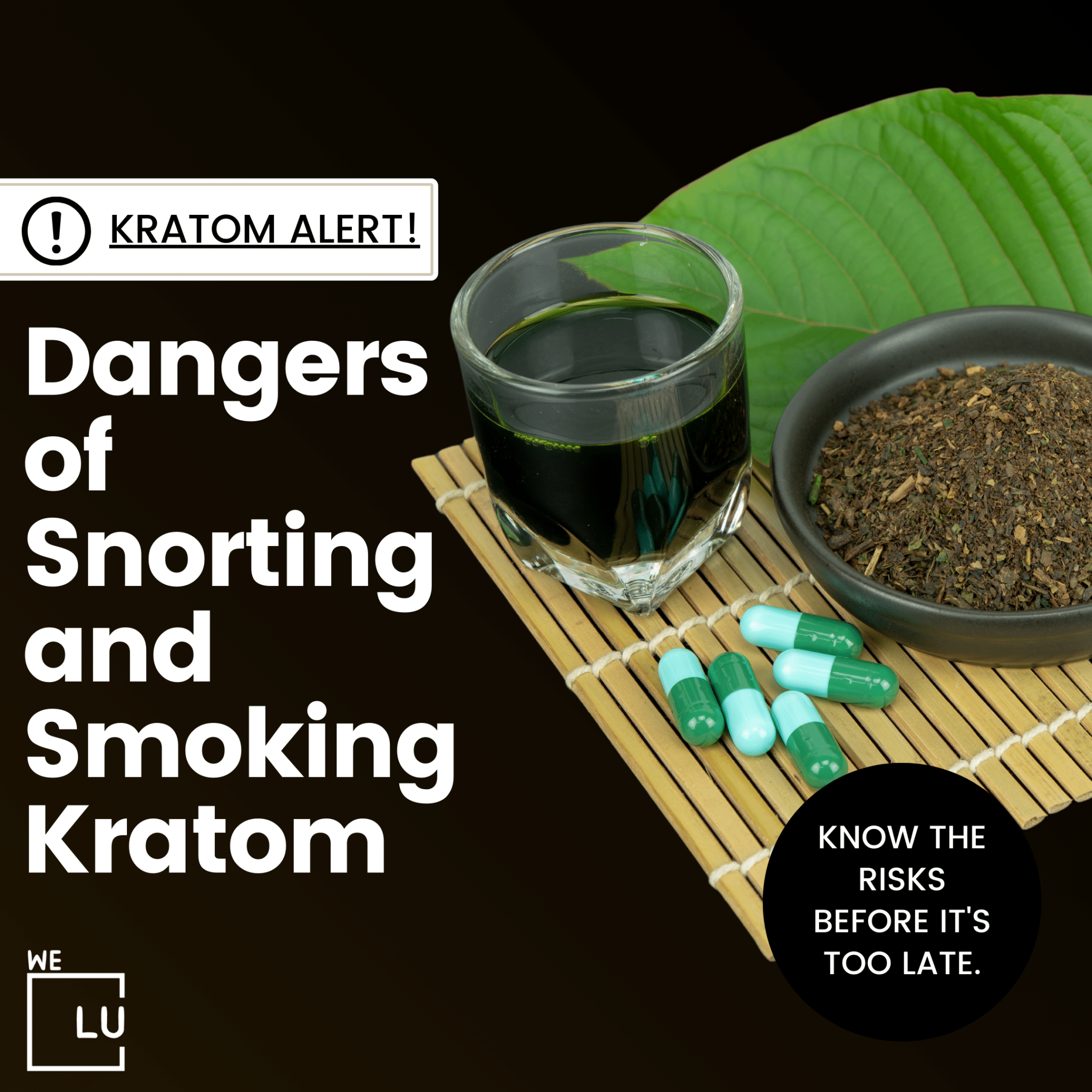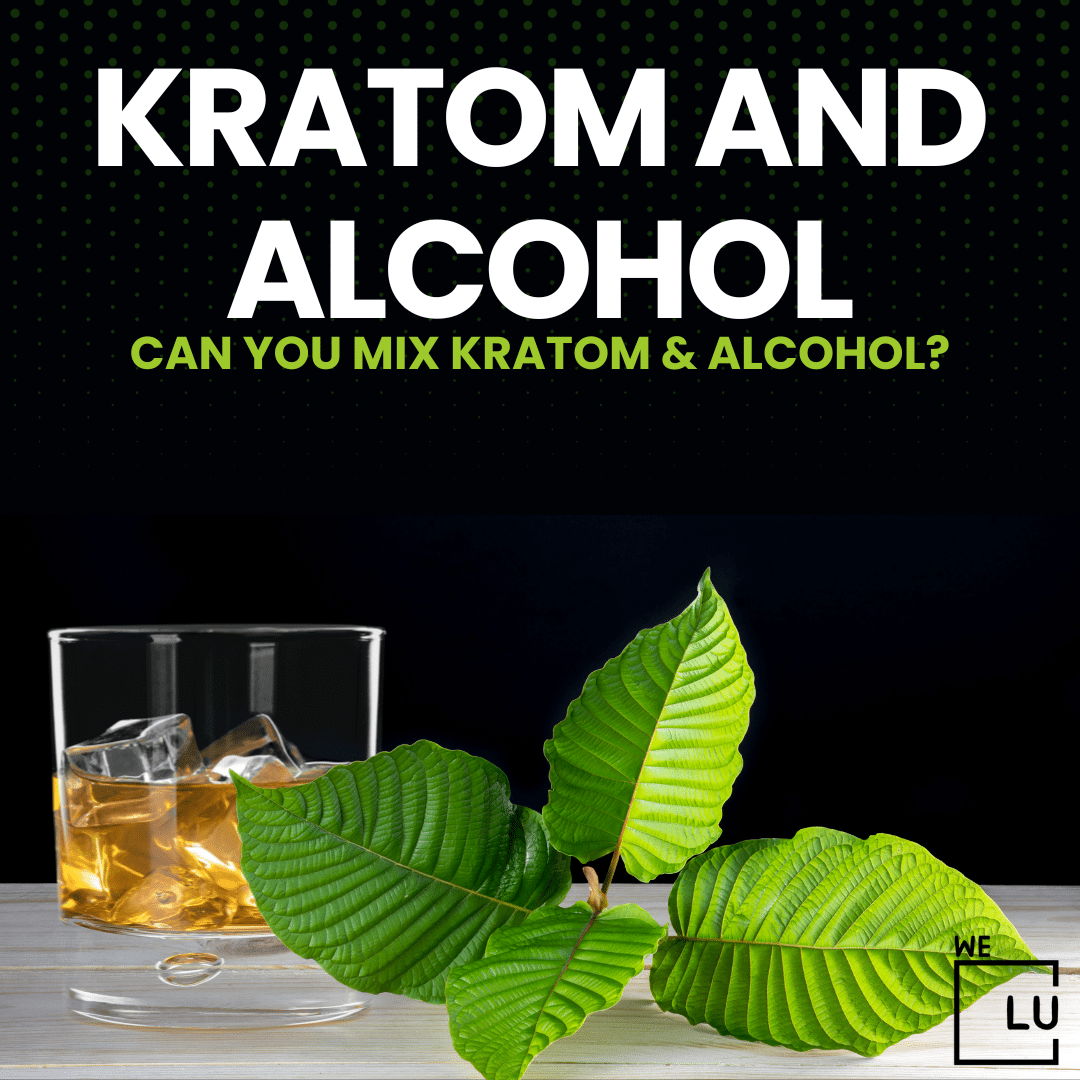While the majority of individuals seek out marijuana for recreational or medicinal purposes, there are unfortunate instances where individuals may intentionally or unknowingly encounter laced weed. Reasons for deliberately seeking laced weed can vary, including the pursuit of enhanced effects or an attempt to mask the perceived inadequacies of the original product. However, the dangers associated with laced substances, such as unpredictable reactions and severe health risks, far outweigh any potential benefits.
If you or someone you know is facing challenges related to weed consumption, whether laced or not, contact We Level Up CA for support and guidance on overcoming potential issues with weed addiction. Your well-being is paramount, and professional help can make a significant difference in ensuring a healthier and safer path forward.
What Does “Lace” Mean?
In the context of drugs, the term “lacing” refers to the practice of adding one or more substances to a drug without the user’s knowledge or consent. This is typically done to enhance the effects of the drug, mask the appearance of lower-quality substances, or introduce entirely different medications into the mixture. For example, someone might lace marijuana with a more potent drug, such as PCP or cocaine, without the user being aware of it.
Lacing drugs can be hazardous because it can lead to unpredictable and potentially harmful effects. Users may be unaware of the additional substances present, and this lack of knowledge can increase the risk of overdose, adverse reactions, or other health complications.
Can You Lace Weed?
It is possible to lace weed with other substances. Lacing involves adding additional substances to a drug, in this case, marijuana, without the user’s knowledge. However, it’s important to emphasize that lacing marijuana is considered a risky and harmful practice.
People might lace weed for various reasons, such as trying to enhance its effects, masking the appearance of lower-quality cannabis, or even introducing other drugs into the mixture. The added substances could include more potent drugs, synthetic cannabinoids, or other chemicals.
Laced weed poses significant health risks, as users may be unaware of the additional substances present, leading to unpredictable and potentially dangerous effects. Additionally, the legality and safety of the added substances are often questionable.
To minimize risks, it’s crucial for individuals to obtain cannabis from reputable sources, such as licensed dispensaries in regions where it’s legal, and to be cautious about the origin of the product. Using laced marijuana can have severe consequences for health and well-being.
What Drugs Or Substances Can Weed Be Laced With?
Marijuana can potentially be laced with a variety of substances, and the specific substances used can vary widely based on the intentions of the person lacing the drug. Some of the substances that may be used to lace weed include:
- Cocaine: Lacing marijuana with cocaine is one way to intensify the drug’s effects. This combination can lead to a mix of the sedative effects of marijuana with the stimulant effects of cocaine. However, it significantly increases the health risks and potential for adverse reactions.
- PCP (Phencyclidine): PCP is a dissociative anesthetic that can cause hallucinations, distorted perceptions of reality, and violent behavior. Lacing marijuana with PCP can lead to unpredictable and potentially dangerous effects, as users may not be prepared for the intensity of the combined substances.
- MDMA (Ecstasy): Lacing marijuana with MDMA can create a combination of the relaxing effects of cannabis with the euphoria and increased energy associated with MDMA. However, this mix can also lead to an increased risk of dehydration, hyperthermia, and other adverse effects associated with MDMA use.
- Synthetic Cannabinoids (Spice or K2): These are laboratory-created compounds designed to mimic the effects of THC, the active ingredient in marijuana. However, synthetic cannabinoids can be much more potent and have unpredictable and severe side effects, including anxiety, hallucinations, and even seizures.
- Herbal Substances: Some sellers may add other plant materials to the marijuana to increase its bulk and make it appear denser. This can deceive users into thinking they are purchasing a larger quantity of pure marijuana, but it can also introduce unknown and potentially harmful substances into the mix.
- Adulterants: Unscrupulous individuals might add various adulterants to marijuana to increase profits. This could include substances like sugar or glass particles to add weight, deceiving users about the actual quantity of the product.
- Harmful Chemicals: Marijuana can be laced with various chemicals or toxins, including pesticides, fertilizers, or other contaminants. These substances can pose serious health risks when inhaled or ingested.
Fentanyl Laced Weed
The combination of fentanyl with other substances, including marijuana, can be especially dangerous due to the unpredictable and potentially fatal consequences. Fentanyl has a high risk of overdose, respiratory depression, and death, even in very small amounts. Mixing it with other drugs compounds these risks, as the interaction between different substances can have unpredictable effects on the central nervous system.
- Potency: Fentanyl is significantly more potent than many other opioids. A small amount can lead to severe and potentially lethal effects.
- Unpredictable Effects: The combination of fentanyl with marijuana can result in unexpected interactions. Users may not be aware of the added substance, leading to an increased risk of overdose.
- Increased Risk of Overdose: Fentanyl-laced weed increases the risk of overdose, which can be particularly dangerous given the potency of fentanyl and the potential for respiratory failure.
- Health Consequences: Fentanyl exposure, even in small amounts, can have severe health consequences, including respiratory distress, loss of consciousness, and death.

Skip To:
Learn More:
- Fentanyl In Weed. Can Weed Be Laced With Fentanyl?
- How Long Does Weed Stay In Your Blood Stream? How Long Does Weed Stay In Your System?
- What Happens When You Sleep High? Marijuana Use & Sleep
- THC Withdrawal, Symptoms, Timeline, and Treatment
- What Does THC Do to the Brain? Long-Term Effects of Marijuana
- How Long Does THC Stay In Urine? How Long Does Weed Stay In Your System?
- What Does THC Do to the Brain? Long-Term Effects of Marijuana
Why Is Laced Weed Dangerous?
Laced weed is dangerous for several reasons, and the risks associated with consuming it can have severe consequences for the health and well-being of individuals. Here are some key reasons why laced weed is considered dangerous:
- Unpredictable Effects: When marijuana is laced with other substances, the effects become unpredictable. The user may not be aware of the additional substances, their potency, or how they interact with each other. This unpredictability can lead to unexpected and potentially harmful reactions.
- Health Risks: The substances used to lace weed can vary widely and may include more potent drugs or chemicals that are not safe for consumption. For example, lacing with synthetic cannabinoids or hallucinogens like PCP can result in adverse physical and psychological effects, including hallucinations, paranoia, and even seizures.
- Increased Risk of Overdose: Laced weed can significantly increase the risk of overdose, especially if the added substances are potent or if the user consumes a larger amount than intended. Overdosing on laced weed can lead to severe health complications, including respiratory distress, cardiovascular issues, or even death.
- Adverse Reactions: Individuals may have adverse reactions to the added substances in laced weed, including allergic reactions, respiratory problems, or other health issues. These reactions can be exacerbated by users being often unaware of what they consume.
- Legal Consequences: In many places, lacing drugs, including marijuana, is illegal. Both the person lacing the drugs and the user can face legal consequences if caught. Legal issues can compound the already existing risks associated with consuming laced substances.
- Deception of Quality: Laced weed may be used to deceive consumers about the quality or quantity of the product. For example, adding substances to increase weight can give the appearance of a larger amount of marijuana, leading users to believe they are getting a better deal than they are.
- Long-Term Health Effects: Regular consumption of laced weed can have long-term health consequences. Exposure to harmful chemicals or potent drugs can lead to physical and mental health issues that persist even after the immediate effects wear off.
To minimize these risks, individuals should obtain marijuana from reputable and legal sources, such as licensed dispensaries in regions where marijuana is legalized. Being informed about the source of the product and practicing responsible drug use is essential for protecting one’s health and well-being.

Get Your Life Back
Find Hope & Recovery. Get Safe Comfortable Detox, Addiction Rehab & Dual Diagnosis High-Quality Care.
Hotline (855) 695-1160
How To Tell If Weed Is Laced?
Detecting whether weed is laced can be challenging because the added substances are often not visible to the naked eye. However, there are some signs and precautions you can take to minimize the risk of consuming laced weed:
- Purchase from Reputable Sources: Obtain marijuana from legal and reputable sources, such as licensed dispensaries in regions where marijuana is legalized. This significantly reduces the likelihood of getting laced weed.
- Know Your Source: Purchase from people you trust, and if possible, ask about the source of the marijuana. Knowing where your weed comes from can provide some assurance about its quality and safety.
- Check for Unusual Odors: Cannabis typically has a distinctive, recognizable smell. If the weed has an unusual or chemical-like odor, it could be a sign that it has been laced.
- Examine the Appearance: Inspect the marijuana for any unusual color, texture, or foreign materials. Laced weed might have an unnatural appearance due to added substances.
- Observe Unusual Effects: Be cautious if the effects of the marijuana are significantly different from what you expect. Unusual reactions, extreme potency, or unexpected side effects could indicate lacing.
- Use a Testing Kit: There are drug testing kits available that can help identify the presence of certain substances in marijuana. While not foolproof, these kits can provide an additional layer of safety.
- Be Wary of Unusually Cheap Products: If the price of the weed seems too good to be true, it might indicate low quality or potential lacing. Laced products may be used to mask the lower quality of the marijuana.
- Ask the Seller: While this approach may not always yield accurate information, asking the seller about the source and any additives can provide some insights. However, sellers may not always be truthful.
- Trust Your Instincts: If something feels off or if you have concerns about the quality of the weed, it’s better to err on the side of caution and avoid using it.
These methods are not foolproof, and the only way to guarantee the safety of the product is to obtain marijuana from legal and regulated sources. If you suspect that you have consumed laced weed and experienced adverse effects, seek medical attention immediately. Additionally, always be aware of the legal status of marijuana in your location and purchase and use it responsibly.
Get Help. Get Better. Get Your Life Back.
Searching for an Accredited Drug and Alcohol Rehab Centers in Near You?
Even if you have failed previously and relapsed, or are in the middle of a difficult crisis, we stand ready to support you. Our trusted behavioral health specialists will not give up on you. When you feel ready or just want someone to speak to about therapy alternatives to change your life call us. Even if we cannot assist you, we will lead you to wherever you can get support. There is no obligation. Call our hotline today.
FREE Addiction Hotline – Call 24/7Symptoms Of Taking Laced Weed
The symptoms of taking laced weed can vary depending on the specific substance or substances added to the marijuana. Because lacing involves introducing additional and often unpredictable compounds, the symptoms can range from mild to severe. Here are some potential symptoms associated with consuming laced weed:
- Unexpected Intoxication Levels: Users may experience more intense effects than expected, including increased euphoria, sedation, hallucinations, or altered perceptions of reality.
- Agitation and Anxiety: Laced weed, mainly if it contains substances like synthetic cannabinoids, may lead to heightened levels of anxiety, paranoia, and restlessness.
- Hallucinations and Distorted Perception: Some laced substances, such as hallucinogens or dissociatives, can cause vivid hallucinations, altered sensory perception, and a disconnect from reality.
- Increased Heart Rate and Blood Pressure: Stimulants like cocaine or amphetamines, if used to lace the weed, can lead to an elevated heart rate and increased blood pressure.
- Nausea and Vomiting: Laced weed may cause gastrointestinal distress, leading to symptoms such as nausea, vomiting, or stomach cramps.
- Dizziness and Lightheadedness: Adding certain substances may result in dizziness, lightheadedness, or feelings of instability.
- Confusion and Disorientation: Users may experience confusion, disorientation, or difficulty concentrating due to the effects of laced substances.
- Seizures: In extreme cases, laced weed containing certain substances, particularly synthetic cannabinoids, can trigger seizures.
- Difficulty Breathing: Respiratory problems can occur with certain laced substances, including difficulty breathing or shortness of breath.
- Loss of Consciousness: In severe cases or when combined with certain substances, laced weed may lead to loss of consciousness or a state of unresponsiveness.
Symptoms can vary based on the specific substances, individual sensitivity, and dosage. If someone suspects they have consumed laced weed and experiences adverse effects, it’s crucial to seek medical attention promptly. Always be cautious about the source of your marijuana, purchase from reputable and legal sources, and be aware of the potential risks associated with laced substances.

Comfortable Facilities & Amenities
High-Quality Addiction & Mental Health Rehabilitation Treatment
Rehab Centers TourRenowned California Addiction Center. Serene Private Facilities. Inpatient rehab programs vary.
Addiction Helpline (855) 695-1160Proven recovery success experience, backed by a Team w/ History of:
15+
Years of Unified Experience
100s
5-Star Reviews Across Our Centers
10K
Recovery Success Stories Across Our Network
- Low Patient to Therapist Ratio
- Onsite Medical Detox Center
- Comprehensive Dual-Diagnosis Treatment
- Complimentary Family & Alumni Programs
- Coaching, Recovery & Personal Development Events

Why Are Drugs Laced?
The motivations behind lacing drugs can vary, and some common reasons include:
- Enhancing Effects: Some individuals may lace drugs with other substances to enhance or alter the effects of the primary drug. For example, adding more potent medications to a less potent one can intensify the overall experience.
- Masking Inferior Quality: Lacing drugs can be used to mask the inferior quality of the primary substance. For instance, adding substances to marijuana may give it the appearance of higher quality or greater potency.
- Increasing Profit Margins: Unscrupulous sellers may lace drugs to increase profits. Adding other substances, such as fillers or cheaper drugs, allows them to sell less of the actual drug while maintaining the appearance of a larger quantity.
- Deceptive Practices: Lacing drugs can be a way for sellers to deceive consumers. They may use various substances to manipulate the appearance, smell, or effects of the drug, leading users to believe they are getting a different or more desirable product.
- Experimentation: In some cases, individuals may lace drugs as a form of experimentation. This might involve combining different substances to create new and potentially dangerous effects.
- Unintentional Contamination: Sometimes, substances may be unintentionally contaminated during the production or distribution process. Cross-contamination can occur, leading to the inadvertent lacing of drugs.
- Drug Trafficking Tactics: Criminal organizations involved in drug trafficking may use lacing as a strategy to create more addictive products or to manipulate the market.
Lacing drugs poses severe risks to the health and well-being of individuals. Users may be unaware of the added substances, leading to unpredictable and potentially harmful effects, including overdose, adverse reactions, and long-term health consequences. Legal consequences can also arise for both the individuals lacing the drugs and those consuming them.
To minimize risks, individuals are encouraged to obtain drugs from legal and reputable sources, be aware of the potential for lacing, and practice responsible and informed drug use. Additionally, education and awareness campaigns can help discourage the production and consumption of laced substances.
World-class, Accredited, 5-Star Reviewed, Effective Addiction & Mental Health Programs. Complete Behavioral Health Inpatient Rehab, Detox plus Co-occuring Disorders Therapy.
CALL (855) 695-1160End the Addiction Pain. End the Emotional Rollercoaster. Get Your Life Back. Start Drug, Alcohol & Dual Diagnosis Mental Health Treatment Now. Get Free No-obligation Guidance by Substance Abuse Specialists Who Understand Addiction & Mental Health Recovery & Know How to Help.
Marijuana (Weed) Withdrawal Symptoms Timeline, Effects & Addiction Dangers. Helpline (561) 678-0917
Experience Transformative Recovery at the We Level Up California Treatment Center.
See our authentic success stories. Get inspired. Get the help you deserve.



Start a New Life
Begin with a free call to an addiction & behavioral health treatment advisor. Learn more about our dual-diagnosis programs. The We Level Up treatment center network delivers recovery programs that vary by each treatment facility. Call to learn more.
- Personalized Care
- Caring Accountable Staff
- World-class Amenities
- Licensed & Accredited
- Renowned w/ 100s 5-Star Reviews
We’ll Call You
Search We Level Up CA Drug & Alcohol Rehab / Detox & Mental Health Topics & Resources
Sources
- Le Q, Dangol G, Bhandari A. A Rare Case of Diffuse Alveolar Hemorrhage Caused by Fentanyl-Laced Marijuana. Cureus. 2023 May 4;15(5):e38523. doi: 10.7759/cureus.38523. PMID: 37273291; PMCID: PMC10239029. https://www.ncbi.nlm.nih.gov/pmc/articles/PMC10239029/
- U.S. Drug Enforcement Administration. (2017). Drugs of Abuse: A DEA Resource Guide.
- Drug Enforcement Administration. (2017). Drugs of Abuse.
- National Institute on Drug Abuse (NIDA) – Marijuana: https://www.drugabuse.gov/drug-topics/marijuana
- Centers for Disease Control and Prevention (CDC) – Marijuana and Public Health: https://www.cdc.gov/marijuana/index.htm
- National Conference of State Legislatures (NCSL) – Marijuana Overview: https://www.ncsl.org/research/civil-and-criminal-justice/marijuana-overview.aspx
- U.S. Food and Drug Administration (FDA) – Cannabis and Cannabis-Derived Compounds: https://www.fda.gov/news-events/public-health-focus/cannabis-and-cannabis-derived-compounds
- CDC – Marijuana FAQ – https://www.cdc.gov/marijuana/faqs.html
- Kumar S, Bhagia G. Brodifacoum-Laced Synthetic Marijuana Toxicity: A Fight Against Time. Am J Case Rep. 2020 Nov 2;21:e927111. doi: 10.12659/AJCR.927111. PMID: 33132381; PMCID: PMC7647932. https://pubmed.ncbi.nlm.nih.gov/33132381/
- Peters RJ Jr, Kelder SH, Meshack A, Yacoubian GS Jr, McCrimmons D, Ellis A. Beliefs and social norms about cigarettes or marijuana sticks laced with embalming fluid and phencyclidine (PCP): why youth use “fry”. Subst Use Misuse. 2005;40(4):563-71. doi: 10.1081/ja-200052426. PMID: 15830737. https://pubmed.ncbi.nlm.nih.gov/15830737/
- Gilbert CR, Baram M, Cavarocchi NC. “Smoking wet”: respiratory failure related to smoking tainted marijuana cigarettes. Tex Heart Inst J. 2013;40(1):64-7. PMID: 23466531; PMCID: PMC3568288. https://pubmed.ncbi.nlm.nih.gov/23466531/




